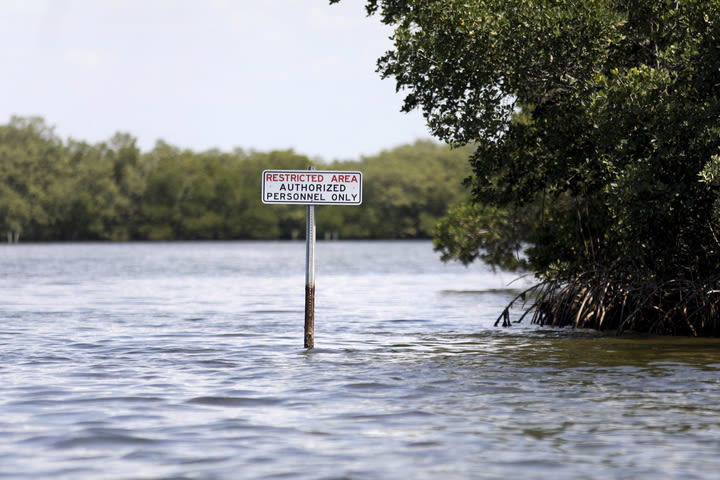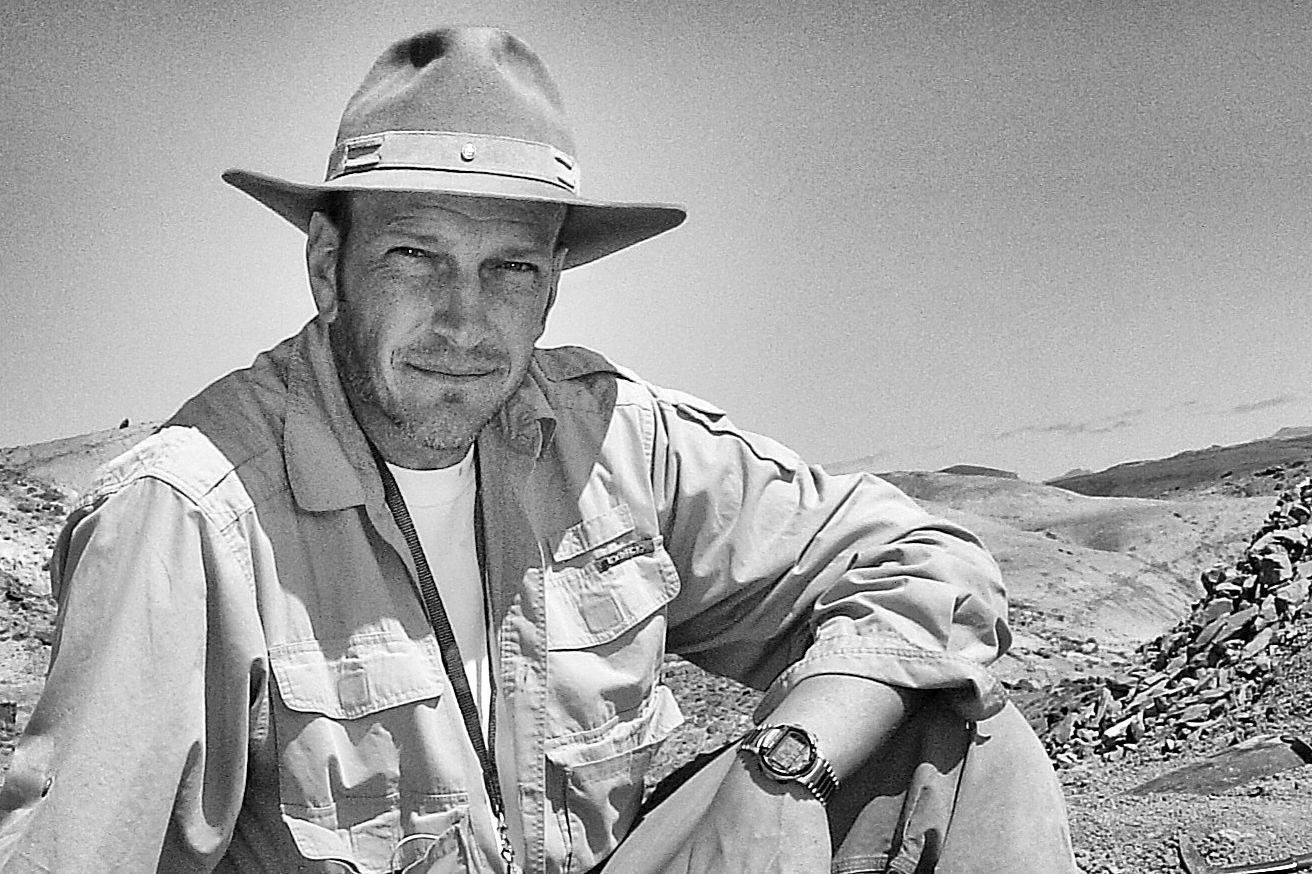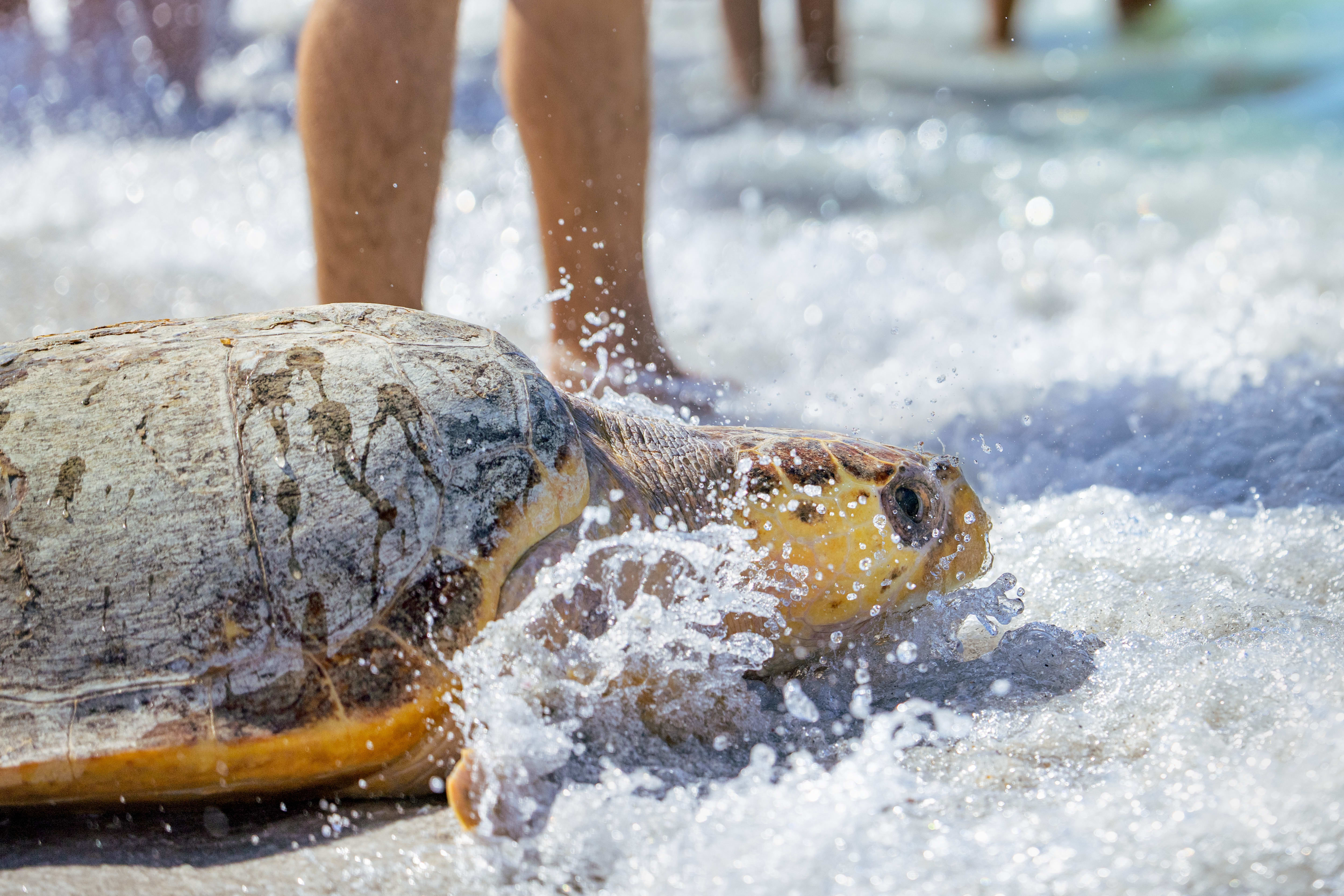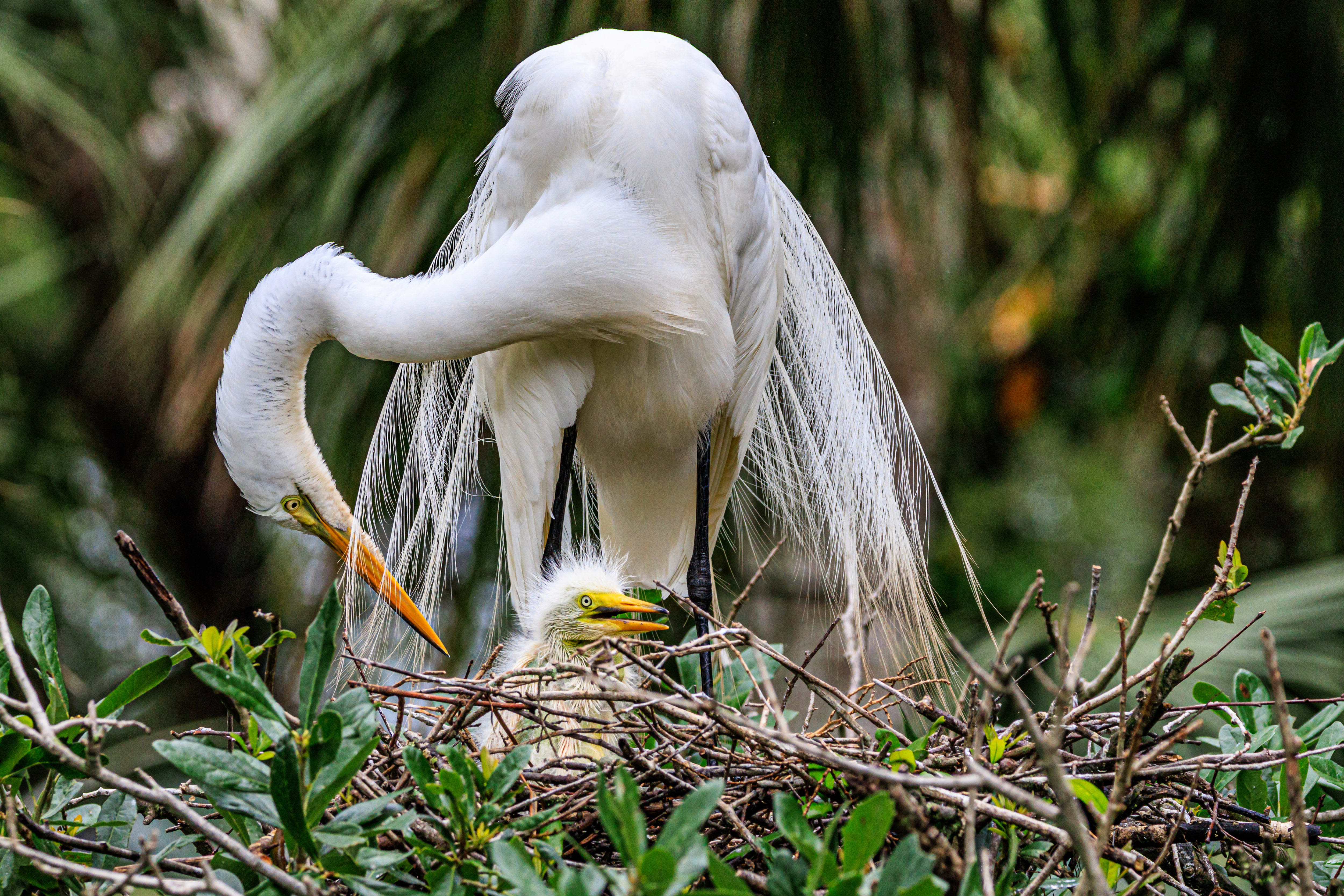Environmentalists Warn That Piney Point Pollution Could Affect Sarasota Bay

A coastal mangrove estuary near Port Manatee.
The immediate risk of the phosphogypsum stack at Piney Point completely collapsing may have passed, but environmentalists warn that the threat of long-term ecological damage remains. As of Friday, 215 million gallons of water have been discharged from the facility into Tampa Bay, and scientists are warning that the pollution could lead to harmful algal blooms and damage to seagrass and wildlife in Sarasota Bay.
David Tomasko, the executive director of the Sarasota Bay Estuary Program, along with other Estuary Program staffers and volunteers, spent Thursday establishing monitoring sites between where water from Piney Point is being discharged and the southern base of the Sunshine Skyway Bridge. Those sites will allow the organization to measure whether the pollution is drifting south and perhaps into the mouth of the Manatee River and Sarasota Bay.
For now, Tomasko says, the area looks healthy, but he warns that it may not be so for long. He says the water discharged into Tampa Bay is much higher in nutrients like nitrogen than normal runoff.
"The water sample results from the early days were extremely high—100 times higher than nitrogen concentration in urban stormwater runoff and 10 times higher than raw sewage," Tomasko says. "If that is the water that continues to be discharged, then 100 million gallons of that is like 1 billion gallons of sewage. This is possibly the worst thing that's happened in Tampa Bay in my career."
Tomasko says the water in Tampa Bay doesn't have strong tides, but instead "sloshes back and forth" in a range of about 2 feet, which means the pollution won't be flushed out quickly. The crisis has also occurred during a dry season, which, according to Tomasko, means the Manatee River doesn't have much force to push the pollution out away from the shoreline. Instead, Tomasko warns, "the water will get pulled up into the Manatee River."
Earlier this week, the Florida Department of Environmental Protection began treating the water being discharged to reduce the nutrient levels within it. As of Friday, the discharge of untreated water has ceased.
County and state government agencies and universities are monitoring water quality throughout Tampa Bay. Scientists from the University of South Florida have been collecting water samples and fish this week, but some of the results from their tests may not be available for weeks.
The Chicago Zoological Society’s Sarasota Dolphin Research Program is monitoring how the wastewater is affecting dolphins. Researchers have already noticed that "many fewer dolphins" can be found near Port Manatee than were observed during previous surveys, according to program director Randall Wells. Wells cautions that those findings are "preliminary" and says the situation is "changing daily."
Rusty Chinnis is a Longboat Key fisherman and conservationist who serves on the board of the Suncoast Waterkeeper. He's been surveying the area this week with others.
He says he's observed high levels of algae that can't be attributed to nutrient pollution from Piney Point. "Everything is choked with algae right now, and this is not related to the spill," he says. According to Chinnis, Sarasota Bay has also lost large amounts of seagrass in recent years. It's a situation that could be made worse by events of the past week.
"Piney Point is just a terrible thing on top of an already bad situation," says Chinnis. "There's no way it cannot make it worse."
The Sarasota Bay Estuary Program is focused on measuring seagrass and algae levels in shallow waters close to shore, south of the leak. Tomasko says the organization is trying to establish a baseline that can then be compared with future changes to monitor disruptions caused by the Piney Point dumps.
When asked what effect all the runoff may have on the region's wildlife, Tomasko says no one knows. "A lot of us, we've never seen anything like this before," he says. "Never."
But he says we do know the results won't be good: "You can't add this amount of nutrients and not have something bad happen."



